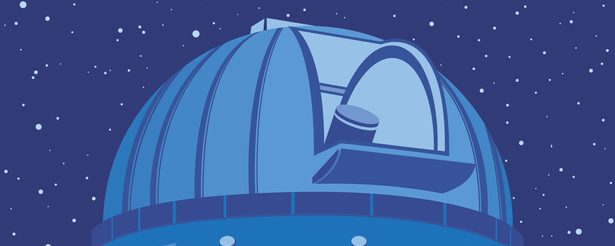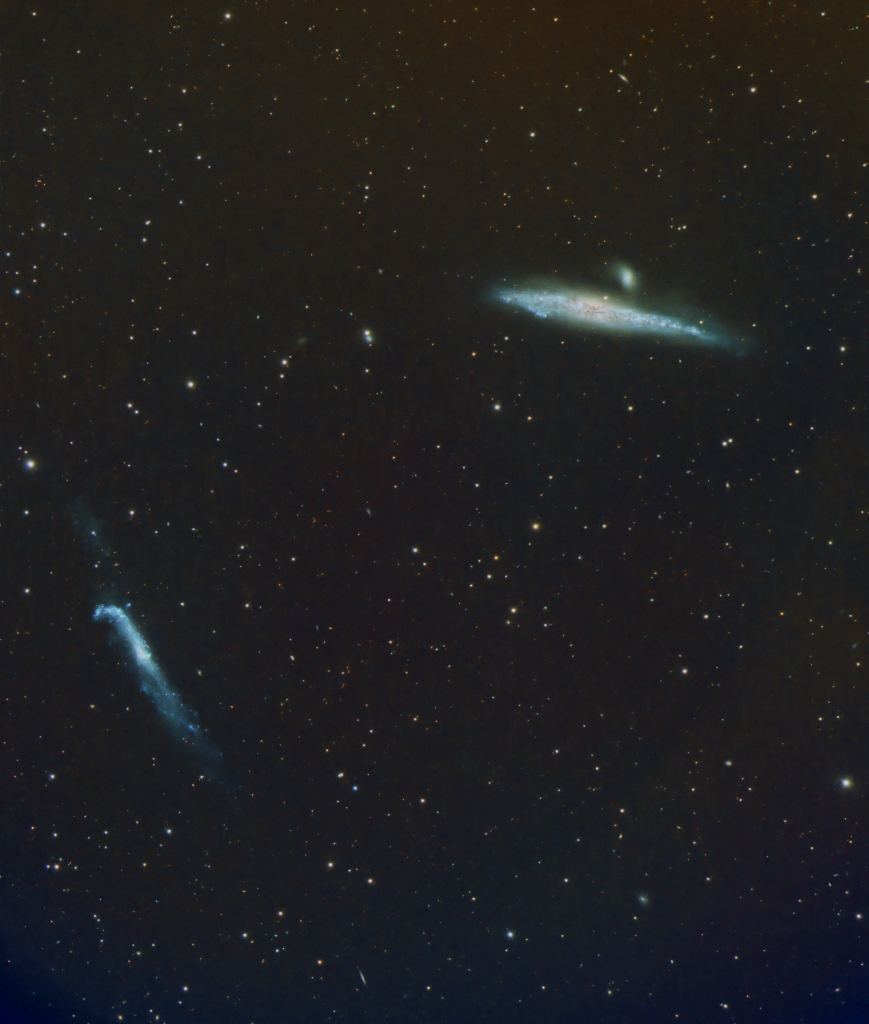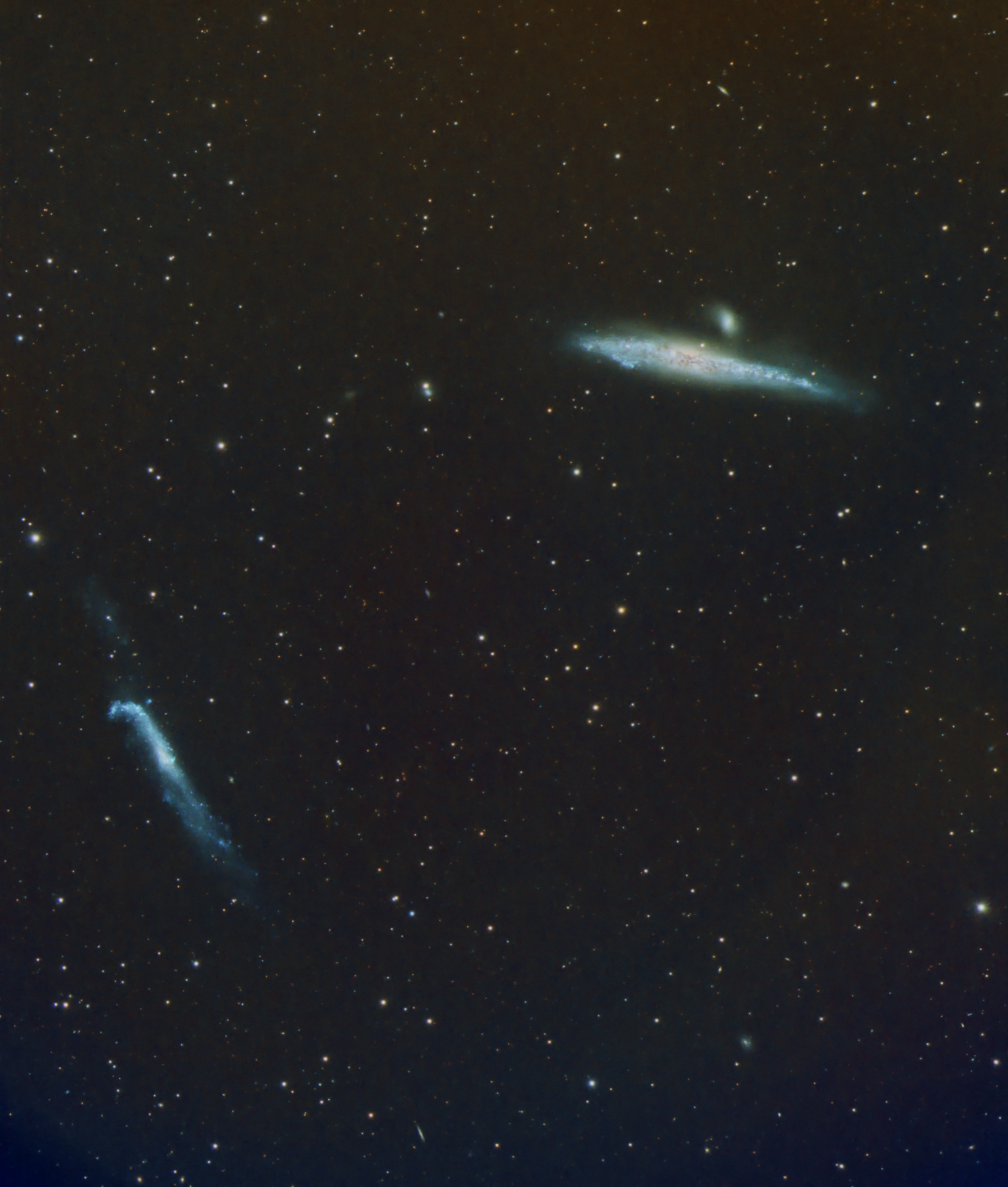
Similar Posts
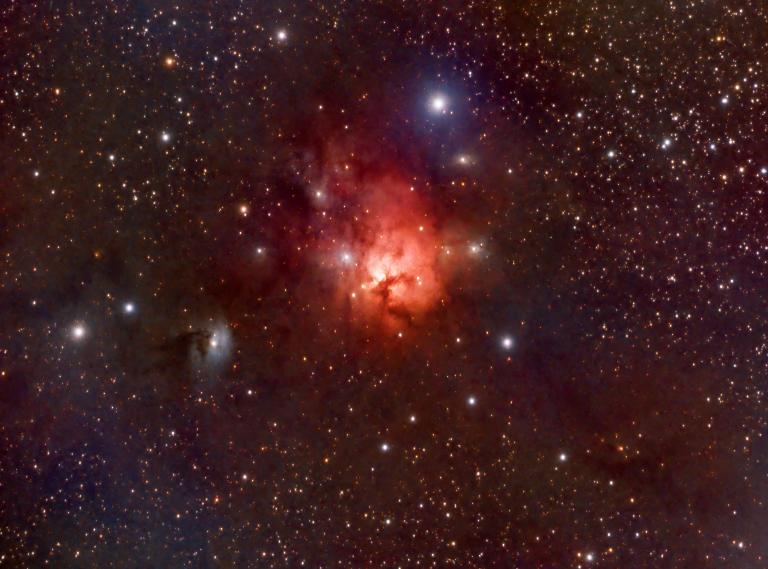
The Northern Trifid Nebula
Formally NGC1570, the “Northern Trifid” is a combination of an emission nebula (the red parts, which is ionized Hydrogen emitting its own light) and a reflection nebula (the blue parts, which is starlight reflecting off dust.) You can also see hints of the dust surrounding this area, which is difficult to capture under the light-polluted…
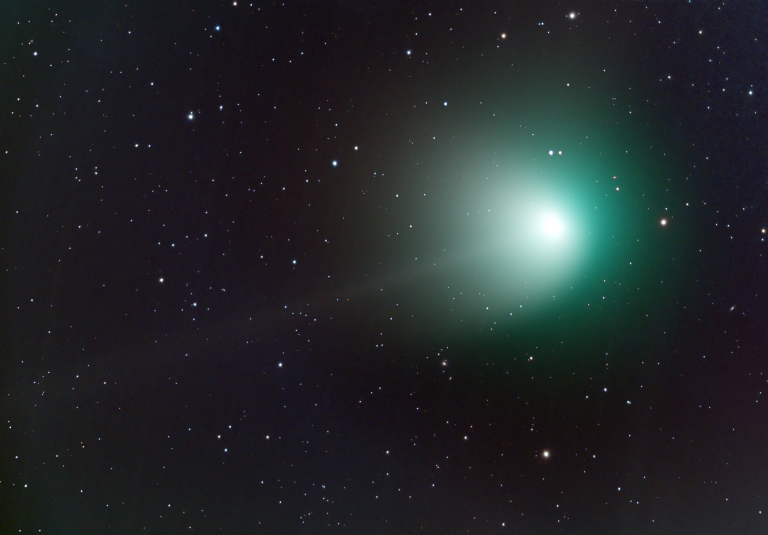
Another look at the “green comet”
I don’t know why the press has latched onto the name “the green comet” for C/2022 E3 (ZTF) – most comets are green, and it’s too dim to see any color at all if you’re viewing it through binoculars or a telescope. But through 2 hours of total exposure time, the colors do emerge, and…
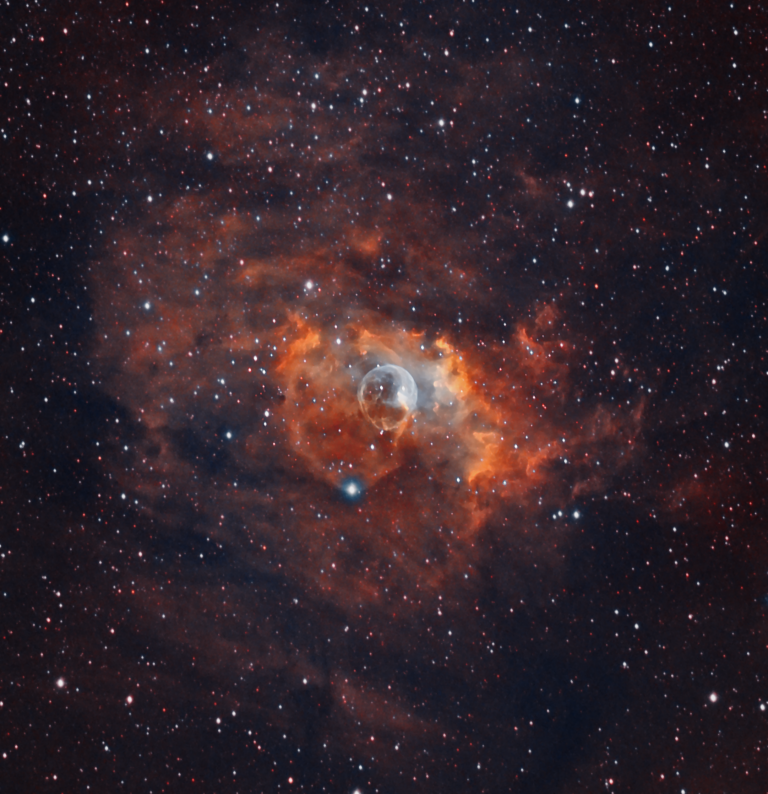
The “Bubble Nebula”
Here’s my latest image of the “Bubble Nebula”, one of my favorite objects in our galaxy. That blue “bubble” is a shell of gas pushed out by the stellar wind of the bright star just right of its center. It’s a big star, 10-20 times larger than our sun. Its radiation is also illuminating and…
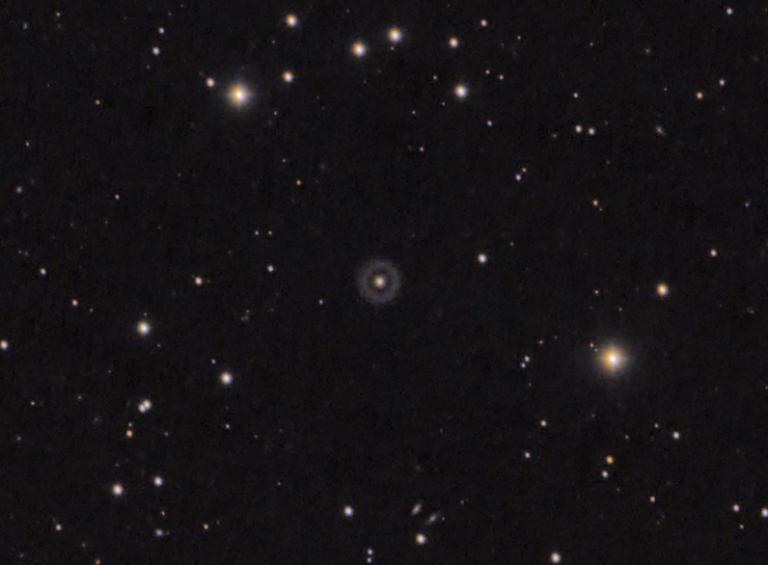
A “ring galaxy” 600 MILLION light-years away
Hoag’s Object is the weirdest galaxy I know of; it is a “ring galaxy” – a very rare galaxy type that’s just a galactic core of stars, surrounded by a ring of stars that’s seemingly disconnected from its core. This galaxy has always captured my imagination. Just look at this image from the Hubble Space…
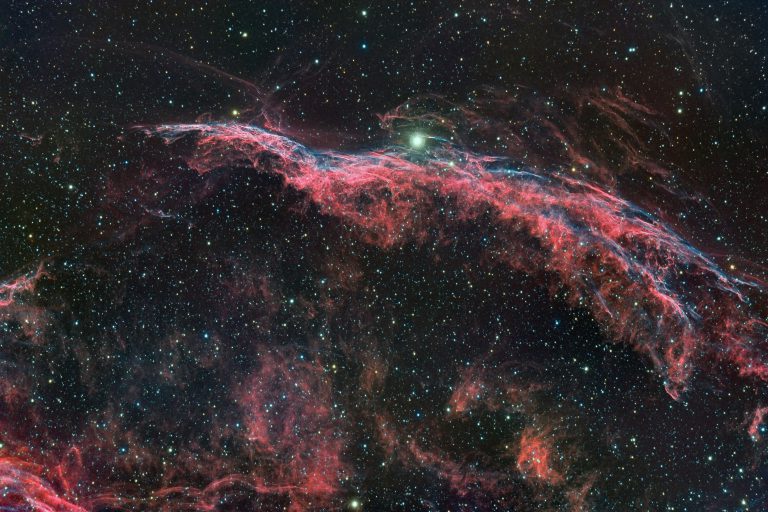
The “Witch’s Broom”, revisited
This portion of the Veil Nebula, commonly called the “Witch’s Broom,” is part of a larger shell of gas known as the Cygnus Loop. It’s gases blown off from a supernova that exploded 10,000 to 20,000 years ago! The rich red and blue colors are real; this is not a false color image. Shot over…

The Lagoon Nebula (M8)
This is a bright, popular nebula deep within the summer Milky Way… but it’s low in the sky, and this is the first time I’ve been able to capture it above the trees. Still, short summer nights and cloudy summer weather present its challenges. Shown processed in the “Hubble palette” and an approximation of its…
